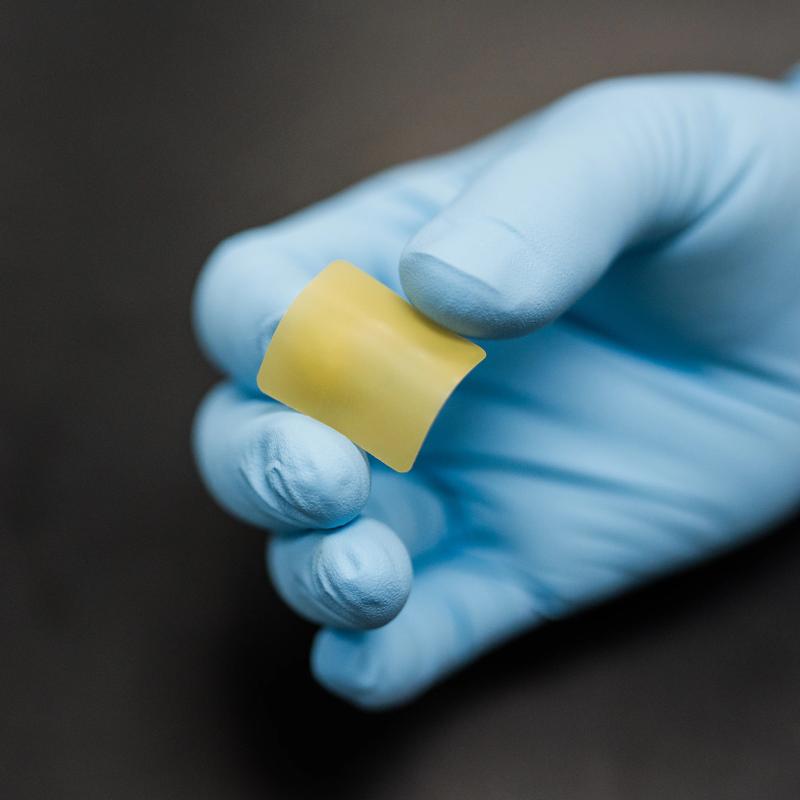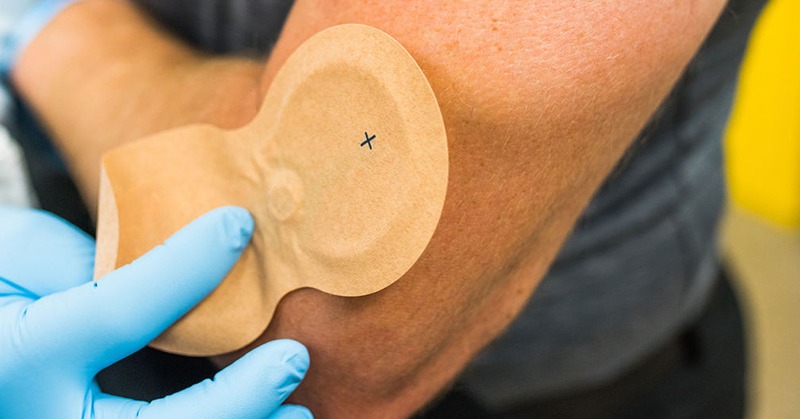Transdermal patches are a well-established method of drug delivery, offering many benefits to patients, providers, and manufacturers. Developing a successful medicated transdermal patch requires a high level of resources and expertise. However, the market is well-regulated, and the possibilities for new transdermal treatments are almost endless.
For those interested in bringing a transdermal patch to the market, this article will help you understand the basics of various types of transdermal patches and how they work.
What Are Transdermal Patches?

Transdermal patches adhere to the skin as a way to deliver drugs. They provide a specific, predetermined dose of medication that is absorbed through the skin and into the bloodstream. Therefore, transdermal patches offer a non-invasive and painless method of drug delivery, with the added benefit of providing a consistent therapeutic dosage over a predetermined time period.
In recent years, the demand for topical drug delivery via adhesive patches has grown significantly as more examples of successful treatments enter the mainstream.
HOW ARE TRANSDERMAL DRUGS DELIVERED?
A transdermal patch acts as a carrier for a drug, holding it until it’s applied. At the point of application, the patch’s adhesive secures it to the skin, and the drugs contained in the patch will begin to permeate into the bloodstream. The patch will continue to administer its Active Pharmaceutical Ingredients (APIs) until either they are fully absorbed or the patch is removed. Therefore, the length of wear time and the amount of drug delivered is different from patch to patch.
Transdermal patch drug delivery systems include a few essential components:
- Backing
- Drug
- Membrane
- Adhesive
- Liner
TRANSDERMAL ABSORPTION
There are two main subtypes of transdermal patch drug delivery systems: passive and active.
Passive vs. Active Systems
Passive transdermal patch drug delivery systems rely only on natural diffusion to transfer the drug from the patch to the skin and into the body. They provide a consistent diffusion rate, depending upon the characteristics of the skin and the design of the patch.
Active transdermal patch drug delivery systems use a specific method to aid in the transfer of the drug to the skin and into the body. These methods include chemical enhancers and permeators, physical aids like micro-needles, and low electrical current like iontophoresis. The amount of diffusion depends on the active method used, the drug characteristics, and the skin.
TYPES OF TRANSDERMAL PATCHES
Some transdermal patch designs are far more complex than others. Depending on the APIs they include and how they are absorbed, additional permeation enhancers, stabilizers, or different packaging may be required. Successful transdermal patch development involves discovering the ideal combination of all necessary components into an effective drug delivery system.
Drug developers like Tapemark have pioneered many types of transdermal patch designs, including matrix, reservoir, multilaminate, and drug-in-adhesive. Additionally, Tapemark’s proprietary designs greatly expand the type of drugs that can be delivered via transdermal patch.
PROPRIETARY DESIGNS
IontoPatch
The IontoPatch is an iontophoresis patch that uses a low electric current to deliver medication through the skin, hair follicles, and sebaceous glands to the underlying tissue. Iontophoresis technology has been used in physical therapy for more than two decades. However, it’s gaining momentum in recent years because it is non-invasive and has fewer side effects than traditional treatments. Iontophoresis patches also can accommodate more customized treatment plans.

Unlike other iontophoresis patches on the market, the IontoPatch is specifically designed for use on areas of the body that require excessive motion, like shoulders, knees, and elbows. It can be wrapped, braced, or splinted, is weight-bearing, and can be safely used in patients with a pacemaker.
MacroPerm
The MacroPerm patch opens the possibility of delivering molecules that have previously been too large for effective transdermal delivery. The MacroPerm patch is designed to transport APIs up to 25,000 daltons. The end result will be new transdermal patch drugs to help patients around the world.
In addition to size, the MacroPerm patch greatly expands the types of substances that can be delivered through the skin. For example, Tapemark’s scientists were the first to demonstrate that large hydrophilic substances (molecular substances that are attracted to water and are water-soluble) can be delivered transdermally.
MicroDerm
The MicroDerm patch uses microneedle technology to deliver a wide range of drugs to patients. The patch, with tiny microneedles, penetrates the skin just enough to enable the drug to enter the bloodstream, but not so far as to create the pain or inconvenience associated with hypodermic needles. In the future, MicroDerm patches are capable of providing safe, effective alternatives to needles and shots, including vaccines, diabetes management, large molecule delivery, protein and peptide delivery, and biologics.
Transdermal Patch Adhesives
Adhesives serve a vital role in transdermal patch drug delivery, as they keep the patch in contact with the skin, making drug absorption possible. Figuring out the right adhesives is therefore an integral part of bringing a new transdermal medication to market.
Adhesives for transdermal drug delivery must be skin-safe, medical grade, and heat activated. Depending on the style of patch, the adhesive may be combined with the drug in a single formula, as with multilaminate and drug-in-adhesive patches, or kept separate, as with matrix and reservoir style patches.
If you’re considering working with a CDMO, discovering the right adhesive for a new patch will be a critical component of the drug development process. Fortunately, Tapemark has already established relationships with all of the key suppliers of adhesives that have been approved for transdermal use. Furthermore, we already have expertise in the use of silicone, acrylic, and polyisobutylene (PIB) adhesives in our transdermal products, and can make custom adjustments on-site to improve performance.
Developing a Successful Transdermal Patch
Developing a successful transdermal patch is a major undertaking. While the benefits can be significant, the process is known to span multiple years. Perhaps the greatest obstacle is underestimating the complexity of formulating a compound for transdermal delivery.
What is possible with transdermal patch development will depend on the partner you choose. As a full-service CDMO, Tapemark has the staff, experience, equipment, and facilities to bring highly complex transdermal drug delivery systems from concept all the way through manufacturing and shipment.
